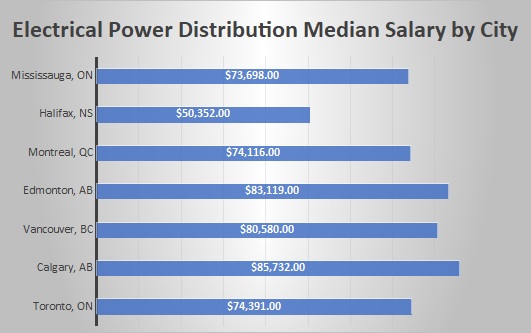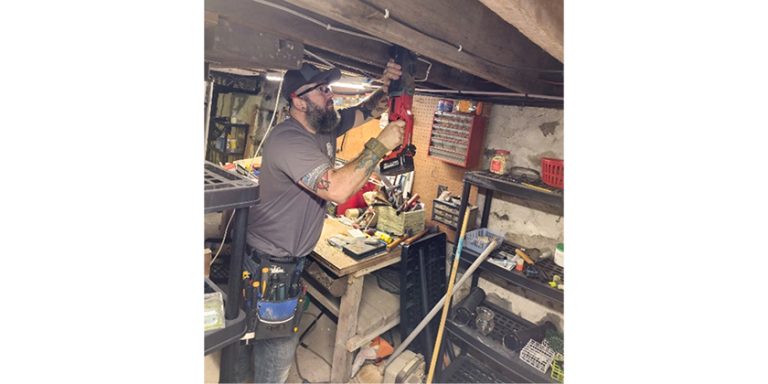Taking on Risk and Uncertainty

January 20, 2017
Keith Sones
In 1986, after spending a few years in university and working at various construction jobs, I received a phone call from a company that I’d applied to for employment. The human resources manager informed me that I’d been selected from a number of candidates for what was, at that time in my life, my dream job.
I was elated! Visions of vast riches flowed through my mind like a TV lottery advertisement, and I believed I was now set for life. No more worrying about paying the bills, I would be jetting away on exotic vacations every year and have job security that would make a tenured professor envious. In short, I was about to buy a house on Easy Street. Life was grand.
Oh, I know what you’re thinking. He must have really lucked out and landed a position in a high flying engineering firm or perhaps an executive position of some sort. Nope. My dream had sent me in another direction completely. I was about to become a factory worker.
Huh? That was your dream job? Oh, it must have been a supervisory role overseeing plant operations. Or a trainee position that would fasttrack you to a luxurious management career.
Wrong again. I would punch a time clock every morning, pick up a set of wrenches and install fuel tank steps on large highway trucks. Several times a day, over and over. For days, weeks and hopefully years.
OK, you are now understandably confused, wondering why I was over the moon by securing an assembly line job. So to help you better understand my position, it’s important to understand the context. In 1986 we were just coming out of a recession that had lasted five years or so. Mortgage rates were hovering around 11% and those were lower than they had been a few short years ago. Good jobs were scarce, and it was difficult for many people, myself included, to make ends meet. Looking into my crystal ball and having gone through financially tough times, being hired into a factory where many people had been working for years at good wages looked downright upper class to me.
Over the next couple of years, things went well at the factory. I was fortunate to work with a lot of really great people, earned a decent living and gained some skills that would serve me well for years to come. Life, as I had hoped, was indeed good.
So I decided to walk away from it all.
Why? With everything going so well and being spared many of the financial challenges that some of my friends were still experiencing, why would I toss it all in the trash and take on a life full of risk and uncertainty? That part was easy, at least in my mind. The answer? Life’s context had changed, as it frequently does.
In my world view, commercial society had embarked on a path of corporate consolidation. I realize that companies have been merging, acquiring and otherwise morphing since the corporate empire has existed, but it felt like an acceleration was underway. Rumours, newspaper reports and other informal sources started to indicate that the factory where I worked might look different in the not so distant future. So I made plans to return to school and re-educate myself in anticipation of another career.
My colleagues at work were less convinced about the potential future changes. One in particular stated, “The days of the big money jobs are over. If you leave here, you’ll lose. We’ll be fine.” I admit I was nervous, but felt passionate about my choice for the future.
I left for school and a few years later the factory did indeed shut their doors. My former workmates were left without jobs in a tough market, and to this day I feel badly for what happened. They are good people who were caught in circumstances beyond their control.
All too often, we assess the future in one of two ways. Either we will make (or perhaps accept) changes in our lives, or we will choose the status quo. What we most often miss while making these determinations is this: the status quo is merely a snapshot of time in an otherwise dynamic environment. Things change around us all the time, yet we insulate ourselves by thinking that the things we like or are familiar with will remain the same forever. And while that’s a rather comforting thought at times, it is also stubbornly untrue for the vast majority of circumstances.
In our electrical industry, change comes slowly, but it does inevitably arrive. For those of you who began your careers before the introduction of computers, SCADA systems involved a person checking electromechanical dials and related charts on a periodic basis. The real time data that we all value dearly were not even a dream a few decades ago. And yet here we are, operating in a much different world. Vacuum tubes have been replaced by transistors. Utilities use fault location to determine a transmission line problem within a few metres of accuracy. Computers talk to other computers so we can all maintain high levels of reliability.
So, things change. And all of us share a degree of resistance to these shifts in our landscape. Throughout history, those who have embraced change early in the process have variously been described in a manner that goes something like this:
- Step 1 — think about the change (invention, prediction…). Seen as eccentric. Colleagues and competitors don’t pay much attention.
- Step 2 — muse openly about your idea. Seen as a crackpot or delusional. Colleagues and competitors laugh.
- Step 3 — collect information or build prototypes to support the idea. Colleagues and competitors suggest, “It’ll never work.”
- Step 4 — gather enough evidence or build a successful working model. Colleagues and competitors indicate it’s dangerous, too expensive for mass production, or a one-off success.
- Step 5 — attract others to your idea or product. Colleagues and competitors vigorously defend the status quo. (Hint: listen for the phrase, “This is how we do it around here.”)
- Step 6 — demonstrate ongoing and repetitive success. Colleagues join the success and competitors end up in a museum.
As a final thought, this state of change is happening as we speak. Where and to what? I’ll leave you to figure that out, but look to the signposts along the way. Is technology working elsewhere in the world but not yet adopted where you live? Is revenue flat or in decline yet electricity supply and reliability still a social requirement? Is automation changing the way we view our world?
Change is sometimes frightening, but it has also lead to every innovation that we enjoy. Think about your world and ask, “Will I fight the inevitable changes, or embrace them? And what will happen when I do?” Because the only thing that’s certain is that life won’t be what it is today.
Keith Sones is Vice President, National Business Development, The Valard Group of Companies.















